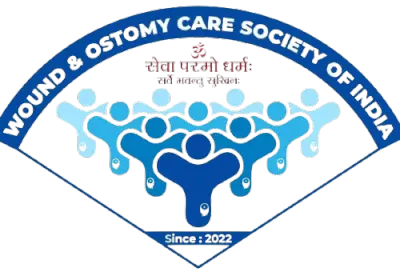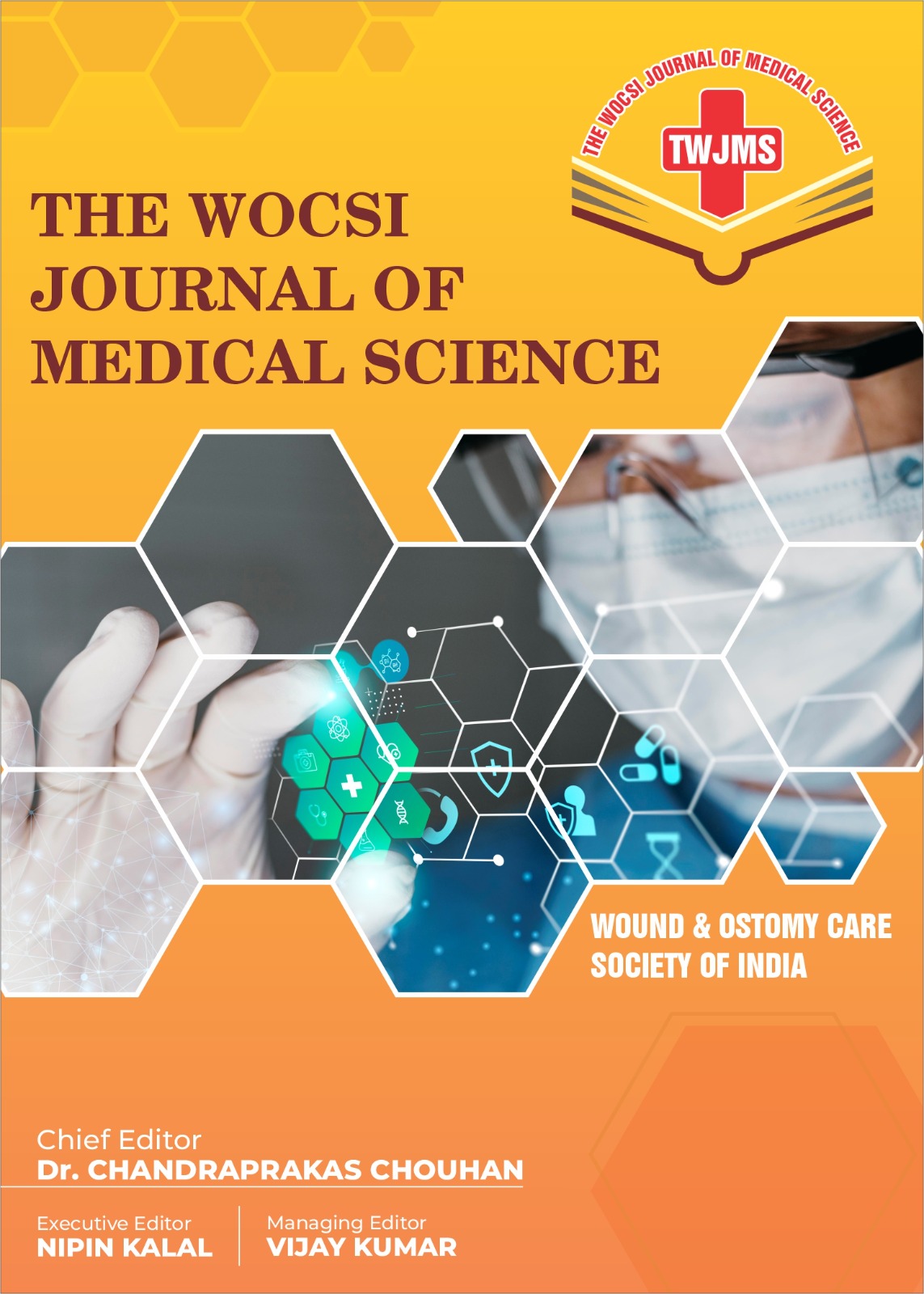Effectiveness of Artificial intelligence based technology to improve wound assessment and better management: A Review Article Artificial intelligence based to improve wound assessment
Main Article Content
Abstract
Wound care clinicians face challenges in accurately predicting wound healing trajectories due to the intricate and dynamic nature of the healing process. During clinical visits, wound care teams capture images of wounds, resulting in the accumulation of extensive datasets over time. The development of innovative artificial intelligence (AI) systems can assist clinicians in diagnosing, evaluating therapy effectiveness, and forecasting healing outcomes. Precise assessment of wound area and the percentage of granulation tissue (PGT) play a crucial role in optimizing wound care and achieving favorable healing results. By utilizing AI-based wound assessment tools, the accuracy and consistency of wound area and PGT measurements can be enhanced, leading to improved efficiency in wound care workflows. Accurate measurements of wound area are particularly vital in optimizing outcomes for patients with chronic wounds. Furthermore, the determination of the percentage of healthy granulation tissue in the wound bed is essential in assessing whether a wound is likely to heal or is ready for definitive closure through skin graft or flap procedures.
Article Details
References
- Nagle SM, Stevens KA, Wilbraham SC. Wound Assessment. [Updated 2023 Jun 26]. In: StatPearls [Internet]. Treasure Island (FL): StatPearls Publishing; 2023 Jan-. Available from: https://www.ncbi.nlm.nih.gov/books/NBK482198/.
- Herman TF, Bordoni B. Wound Classification. [Updated 2023 Aug 17]. In: StatPearls [Internet]. Treasure Island (FL): StatPearls Publishing; 2023 Jan-. Available from: https://www.ncbi.nlm.nih.gov/books/NBK554456/.
- Whitehouse JD, Friedman ND, Kirkland KB, Richardson WJ, Sexton DJ. The impact of surgical-site infections following orthopedic surgery at a community hospital and a university hospital: adverse quality of life, excess length of stay, and extra cost. Infect Control Hosp Epidemiol. 2002 Apr;23(4):183-9.
- Improving the accuracy of surgical wound classification documentation. AORN J. 2021 Dec;114(6):P10-P12.
- Nagle SM, Stevens KA, Wilbraham SC. Wound Assessment. [Updated 2023 Jun 26]. In: StatPearls [Internet]. Treasure Island (FL): StatPearls Publishing; 2023 Jan-. Available from: https://www.ncbi.nlm.nih.gov/books/NBK482198/
- Long CD, Granick MS. A multidisciplinary approach to wound care in the hospitalized patient. Clin Plast Surg. 1998 Jul;25(3):425-31. PMID: 9696902.
- Bhatt P, Liu J, Gong Y, Wang J, Guo Y. Emerging Artificial Intelligence-Empowered mHealth: Scoping Review. JMIR Mhealth Uhealth. 2022 Jun 9;10(6):e35053. doi: 10.2196/35053. PMID: 35679107; PMCID: PMC9227797.
- Queen D. Artificial intelligence and machine learning in wound care-The wounded machine! Int Wound J. 2019 Apr;16(2):311. doi: 10.1111/iwj.13108. PMID: 30887702; PMCID: PMC7948899.
- Mai Dabas, Dafna Schwartz, Dimitri Beeckman, and Amit Gefen Application of Artificial Intelligence Methodologies to Chronic Wound Care and Management: A Scoping Review, Advances in Wound Care 2023 12:4, 205-240.
- Bitkina OV, Park J, Kim HK. Application of artificial intelligence in medical technologies: A systematic review of main trends. Digit Health. 2023 Jul 18;9:20552076231189331. doi: 10.1177/20552076231189331. PMID: 37485326; PMCID: PMC10359663.
- Hosny A, Parmar C, Quackenbush J, et al. Artificial intelligence in radiology. Nat Rev Cancer 2018; 18: 500–510.
- Howell RS, Liu HH, Khan AA, Woods JS, Lin LJ, Saxena M, Saxena H, Castellano M, Petrone P, Slone E, Chiu ES, Gillette BM, Gorenstein SA. Development of a Method for Clinical Evaluation of Artificial Intelligence-Based Digital Wound Assessment Tools. JAMA Netw Open. 2021 May 3;4(5):e217234. doi: 10.1001/jamanetworkopen.2021.7234. PMID: 34009348; PMCID: PMC8134996.
- Gupta S, Gupta SS, McMath K, Sugandh S. Enhancing complex wound care by leveraging artificial intelligence: an artificial intelligence chatbot software study. Wounds. 2023 Aug;35(8):E265-E267. doi: 10.25270/wnds/23073. PMID: 37643453.
- Helm JM, Swiergosz AM, Haeberle HS, Karnuta JM, Schaffer JL, Krebs VE, Spitzer AI, Ramkumar PN. Machine Learning and Artificial Intelligence: Definitions, Applications, and Future Directions. Curr Rev Musculoskelet Med. 2020 Feb;13(1):69-76. doi: 10.1007/s12178-020-09600-8. PMID: 31983042; PMCID: PMC7083992.
- Sen CK. Human Wound and Its Burden: Updated 2020 Compendium of Estimates. Adv Wound Care (New Rochelle). 2021 May;10(5):281-292. doi: 10.1089/wound.2021.0026. PMID: 33733885; PMCID: PMC8024242.
- Kujath P, Michelsen A. Wounds - from physiology to wound dressing. Dtsch Arztebl Int. 2008 Mar;105(13):239-48. doi: 10.3238/arztebl.2008.0239. Epub 2008 Mar 28. PMID: 19629204; PMCID: PMC2696775.
- 26. Lindholm C, Searle R. Wound management for the 21st century: combining effectiveness and efficiency. Int Wound J. 2016;13(suppl 2):5-15. doi:10.1111/iwj.12623.
- He J, Baxter SL, Xu J, Xu J, Zhou X, Zhang K. The practical implementation of artificial intelligence technologies in medicine. Nat Med. 2019;25(1):30-36. doi:10.1038/s41591-018-0307-0
- Mamone V, Fonzo MD, Esposito N, Ferrari M, Ferrari V. Monitoring wound healing with contactless measurements and augmented reality. IEEE J Transl Eng Health Med. 2020;8:2700412. doi:10.1109/JTEHM.2020. 2983156


